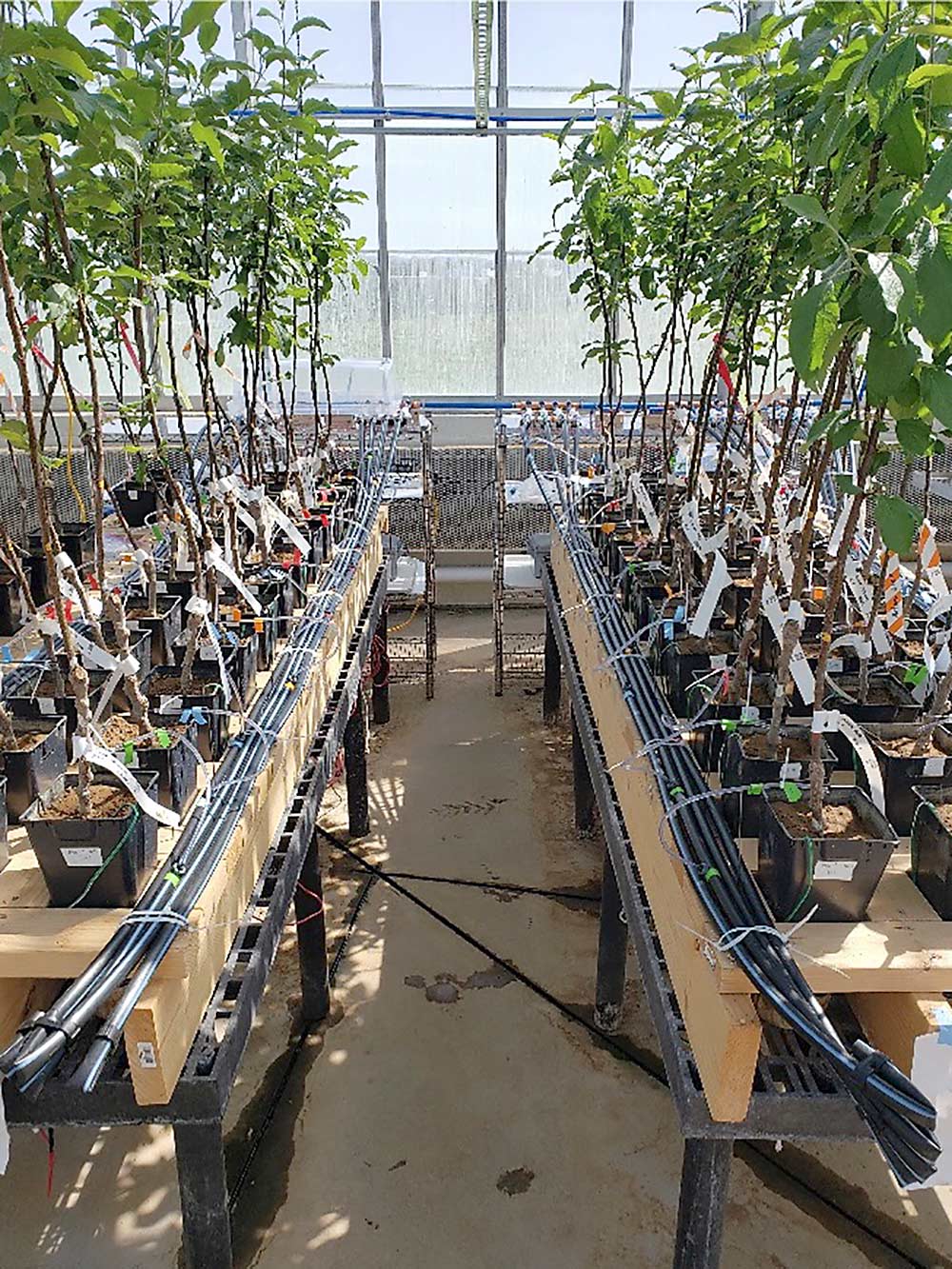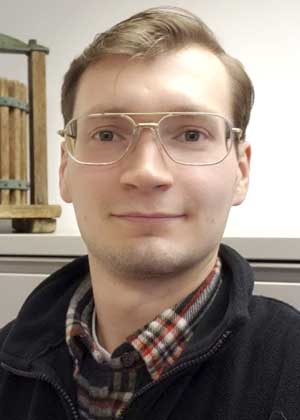
There’s a lot of talk about sustainability in agriculture today, but to make meaningful decisions about sustainability, farmers need more information about what data they can actually measure — and why they should.
That’s why the soils laboratory at the U.S. Department of Agriculture’s Appalachian Fruit Research Station (AFRS) is working toward understanding orchard sustainability within the context of ecosystem carbon balance. This refers to the net rate of carbon accumulation or loss from an ecosystem while considering positive and negative fluxes from natural and human-caused activities. This balance may be used to determine whether an ecosystem functions as a net sink or source of greenhouse gases. Such information is becoming more important to producers as retailers adopt sustainability targets and governments develop incentive programs or carbon credits, which could provide added value.

There is not a lot of data surrounding carbon balance for specialty crops, especially compared with annual cropping or managed forest production systems. This is a budding area of concern that is drawing attention from regional organizations like the Washington Tree Fruit Research Commission and the Northwest Horticultural Council.
In July, the commission and Washington State University hosted a workshop, “Understanding the carbon footprint of tree fruit,” to foster discussion surrounding the current state of knowledge. I was invited to share our plans at the AFRS to begin a full, measurement-based, carbon balance study of an apple orchard from inception throughout its life cycle. While limited knowledge exists on portions of an orchard’s carbon balance, few attempts look at the system holistically.
At the AFRS, researchers and staff are gearing up for the project to begin. The new 10-acre, high-density apple planting, while small commercially, will more than triple the acreage of other small-plot research blocks at the station. The logistics of launching a project at this scale have been a challenge, but we are making progress. The soils laboratory has nearly completed the procurement phase of the project and looks to break ground as soon as spring 2023.
When established, the block will provide us with the area necessary to utilize state-of-the-art micrometeorology equipment to measure carbon dioxide change across an entire orchard block as it grows from planting to production. The approach being used, known as the eddy covariance technique, simultaneously measures wind currents in three dimensions and air carbon dioxide content. From air movement in each direction, the equipment is able to calculate the net flux of carbon dioxide into or from a landscape upwind of the device.
That technique will be paired with more traditional soil respiration sampling for two other primary greenhouse gas constituents, methane and nitrous oxide. Vegetation measures such as leaf, fruit and wood biomass will be tracked monthly during the growing season. Altogether, researchers will be able to identify allocation patterns of photosynthetic carbon entering the ecosystem and quantify the carbon balance.
One of the first goals we are working toward is estimating the carbon footprint of installing a new orchard block. We know that the up-front “carbon cost” should slowly be offset by annual gains in tree biomass and photosynthetic activity. How long after installation this offset may take to “break even” and begin sequestering carbon will be important to know for future carbon-accounting endeavors and climate-driven investment.
Moreover, a detailed carbon balance endeavor will allow us to see how some horticultural practices may influence the carbon balance, such as drive row management, pruning activity and planting density. This detail also positions producers to realistically advocate for recognition of their activities to state agriculture technical committees, which often have oversight of environmental quality incentives.
It really is an exciting project that is not only relevant now, but it may pay dividends into the future as sustainable climate policy and mitigation strategies develop.
The soils laboratory is also working with other aspects of industry sustainability related to climate change. We are particularly interested in abiotic stress conditions likely to become more prevalent while we experience a higher frequency of erratic or extreme climate events. I’ve studied drought stress and water management in other crop systems, and one opportunity I see is increasing the precision with which we recommend cultivar-rootstock combinations in regions with varying soil types and water availability. Current recommendations describe rootstocks and scion suitability, but I think with some work we can begin prescribing quantitative tolerance ranges by cultivar.
To do this, our lab is developing a screening system that will allow researchers to impose acute and chronic drought stress on containerized plantings. The concept is to monitor tree physiology in detail over the course of stress imposition and correlate the magnitude of physiologic response with a measure of how tightly water is held by the soil. The results offer a summary of what physiologic response can be expected under a defined stress, how long an individual tree can handle the stress, and at what point management action is necessary to prevent the worst effects.
The system is in its prototype phase, and development work is currently ongoing. We anticipate publishing a first report of what we are calling the “Open_Irr” system before 2023.
One subsidiary outcome of the project is that the system also functions as a low-cost data-logging platform and may be configured to automate drip irrigation based on soil moisture content. Popularity of data-driven agricultural management is on the rise, but the expense can be a barrier to adoption, especially for smaller producers. Low-cost or open-source alternatives present entry pathways for all economies of scale.
We have a couple of other technology projects in the works and hope to share more about them in the future.
I want to thank Good Fruit Grower for reaching out to the AFRS. While we are separated from many apple growers by 2,000 miles, it is sometimes difficult to remember we are here and available to help. We serve all our stakeholders, so don’t hesitate to reach out. At the AFRS, we have a fantastic lineup of early career scientists ramping up their research programs; now is the time to reach out and advocate for research that is relevant to your production system.
—by Andrew Bierer
Andrew Bierer, research soil scientist, joined AFRS in July 2021 with a vision to improve sustainable production practices in specialty crop systems. He can be reached at: Andrew.Bierer@usda.gov.






Great article. Glad to see what my future son-in-law’s work is all about. He works on apple & pear Rsearch.